#auguste la fontaine
Photo






HPPE23: day seven, celebrate!
at first, i just wanted to make some plain character posters. but eventually, i changed my mind. i created these gifs to honor my beloved kids. here, you can see all of my wizarding charas that are part of the lgbtq+ community. 🌈✨ i would like to thank Gryff for creating and hosting this event. i’m really sorry that i couldn’t post every single day, but i still did have fun! i hope you also had a wonderful pride month, @gaygryffindorgal
#hppe23#colette belrose#nadia erbland#pandora lovelace#lainey bell#emile belrose#auguste la fontaine#*edits#*gifs#hphm#hphl#hpma#fbawtft
10 notes
·
View notes
Note
💗 for Leon and Auguste <3

3 notes
·
View notes
Photo

Auguste Toulmouche (French, 1829 - 1890)
Femmes et enfant à la fontaine; 1856
#Auguste Toulmouche#french art#women#female portrait#blonde#brunette#art#fine art#fine arts#beautiful art#femmes#femmes et enfant a la fontaine#mediterranean#europe#european#europa#european art#oil painting#traditional art#classical art
40 notes
·
View notes
Text
Which is better, to have multiple heads or multiple tails?
In the fable of La Fontaine “The Dragon with Several Heads and the Dragon with Several Tails”, the multi-headed dragon gets caught in a thicket as it tries to squirm through, but the multi-tailed dragon passes by easily. Thus, we are told, it is better to have one strong leader and many followers than to have many equally powerful leaders.
Some illustrations of the dragon(s)!
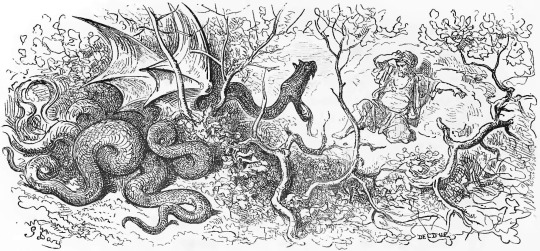
Gustave Doré

Auguste Vimar (those spindly bird/lizard legs!!)


Jean-Baptiste Oudry

François Chauveau

Benjamin Rabier (the tiger heads are especially adorable)
134 notes
·
View notes
Text

cabaretvert CABARET VERT 2024 - CURIOUS BY NATURE 💫
We are pleased to present the headlines and first names of the 18th edition of Cabaret Verte.
In 2024, your best vacation falls from August 15 to 18 in the Ardennes.
All ticket offices are open at cabaretvert.com and will be available on Culture Pass tomorrow!
Hehe! We will soon reveal the 2 mysterious names hidden under the XXXXXX.
🍃Thursday 15:
Queens of the Stone Age • Macklemore • PJ Harvey • Fontaines D.C. • Flogging Molly • Destroy Boys • Blondshell
🍃 Friday 16:
XXXXXX • Nest • SCH • Shay • Lucie Antunes
🍃 Saturday 17 :
Justice • XXXXXX • Fonky Family • La fève • Vladimir Cauchemar • High Vis • Dabeull • Red Fang • Born Of Osiris
🍃 Sunday 18 :
Korn • Shaka Ponk • Louis Tomlinson • Mass Hysteria • Liberato • Neil Frances • Say She She • Joey Valence & Brae • Nova Twins
cabaretvert.com
15 notes
·
View notes
Note
Do you have a favourite piece of art? What about it attracts your eyes to it?
There are a few that came to mind.
One is The Virgin and Child with Saint Anne and John the Baptist by Leonardo DaVinci. (I have a print of it hanging in my living room that I picked up at the National Gallery in London.) I don't talk about it much on Tumblr, but I'm pretty religious, so it means something to me in that respect, and I've always been drawn to images that refer to Jesus's humanity.
I also love Auguste Rodin. The Gates of Hell will always be impressive to me just for the sheer amount of work that went into it, but I really, really love La Cathédrale because it's the kind of smaller piece that can just grab you as you're passing by in a museum. And the Musée Rodin in Paris is one of my favorite museums.
Other sculptures I like include Apollo and Daphne by Bernini at the Galleria Borghese because the movement in it is just breathtaking. And Jean de La Fontaine in the Louvre is quirky and adorable and I think it's fun how many animals were worked into the sculpture.
There's also a piece by Jay DeFeo that I won't list specifically by name because it would pretty much dox me, but I will always go out of my way to look at it again given the chance.
My actual favorite piece is also one that I can't share for fearing of doxing myself because it's by my cousin who passed away. It's a black and white etching that I will always love because it's beautiful and grotesque, which is something he always balanced so well in his art.
My printmaker cousin actually inspired my purchase of this piece (painted woodcut) from a little gallery in Ketchikan, Alaska: Owl Looking Out Over the Land by Karen Olanna , which I wanted because I've gotten to the point in my life that when I travel, I don't want to buy a bunch of dumb shit souvenirs that will end up in the trash someday: I'd rather invest in one thing that's truly unique. I love how the animals form the coast of the Pacific Northwest and, again, it's amazing to me how so much movement happens in a static piece of art. And the colors are doing their thing, too.

P.S. Also: everything anyone has ever made me as a commission or a gift or as fanart 💕💕💕💕💕💕💕
#thanks for the ask!#I'm not a very skilled visual artist#but I will appreciate the hell out of it#love art#love artists#love supporting artists#frenchie answering asks
8 notes
·
View notes
Text
With Fontaine being inspired from France, I really want to see a reference to the French song ‘La Seine’ from Vanessa Paradis especially the one from the movie ‘A monster in Paris’.
The original french version has lyrics that play on the shared prononciation of ‘La Seine’ (the river that passes through Paris) and ‘La Scène’ (meaning ‘the stage’).
This link is enhanced by the fact that everything happens on a stage wether it’d be a magic show, a play or a trial.
Anyway it is the 25th of August 2023, I hope I didn’t dig my own grave writing this. Have a good day/night…
6 notes
·
View notes
Text
2022 in 12 movies (1 per months)
January
The Pink Panther (1963) directed by Blake Edwards with Peter Sellers, David Niven, Robert Wagner, Capucine and Claudia Cardinale

February
Pépé le Moko (1937) directed by Julien Duvivier with Jean Gabin, Line Noro and Mireille Balin
[First time]

March
Mado (1976) directed by Claude Sautet with Michel Piccoli, Ottavia Piccolo, Jacques Dutronc, Charles Denner and Romy Schneider
[First time]

April
A Countess from Hong Kong (1967) directed by Charlie Chaplin with Marlon Brando, Sophia Loren, Tippi Hedren, Margaret Rutherford, Sydney Chaplin and Géraldine Chaplin
[First time]

May
Whiplash (2014) directed by Damien Chazelle with Miles Teller, J. K. Simmons, Paul Reiser et Melissa Benoist

June
L'Arme à gauche (1965) directed by Claude Sautet with Lino Ventura, Sylva Koscina, Leo Gordon and Alberto de Mendoza
[First time]

July
Compartiment tueurs (1965) directed by Costa-Gavras with Yves Montand, Jacques Perrin, Catherine Allégret, Pierre Mondy and Claude Mann
[First time]

August
Soylent Green (1973) directed by Richard Fleischer with Charlton Heston, Leigh Taylor-Young, Edward G. Robinson and Chuck Connors

September
Estambul 65 (1965) directed by Antonio Isasi-Isasmendi with Horst Buchholz, Sylva Koscina, Mario Adorf, Perrette Pradier and Klaus Kinski
[First time]
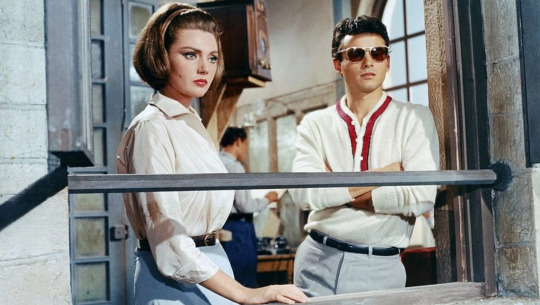
October
Nuovo Cinema Paradiso (1988) directed by Giuseppe Tornatore with Philippe Noiret, Salvatore Cascio, Marco Leonardi and Jacques Perrin
[First time]

November
Robin and Marian (1976) directed by Richard Lester with Sean Connery, Audrey Hepburn, Robert Shaw and Richard Harris
[First time]

December
Rebecca (1940) directed by Alfred Hitchcock with Laurence Olivier, Joan Fontaine, George Sanders and Judith Anderson
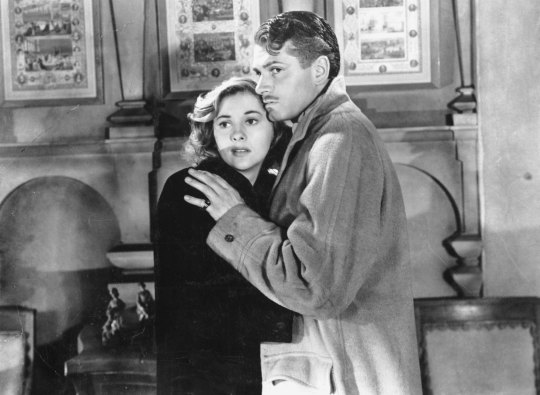
Honourable Mentions :
Guess Who's Coming to Dinner (1967)
In the Heat of the Night (1967)
An Affair to Remember (1957)
Le Sauvage (1975)
The Night of the Generals (1967)
Crime et Châtiment (1956)
Un témoin dans la ville (1959)
Le Mans (1971)
Les Demoiselles de Rochefort (1967)
A Star Is Born (2018)
César et Rosalie (1972)
The Breakfast Club (1985)
C'est magnifique ! (2022)
The Blues Brothers (1980)
Under Capricorn (1949)
Tous à l'Ouest (2007)
Le Fantôme du Bengale (1996)
Ho ! (1968)
The Greatest Show on Earth (1952)
The Wrong Man (1956)
The Rope (1948)
Le Visiteur du Futur (2022)
Le Secret des Incas (1954)
Itinéraire d'un enfant gâté (1988)
Le Magnifique (1973)
La Femme d'à côté (1981)
The Hustler (1961)
The Big Sleep (1946)
Fantômas (1964)
#2022 films#my top 12#cinema#cinematography#the pink panther#pépé le moko#mado#a countess from hong kong#whiplash#l'arme à gauche#compartiment tueurs#soylent green#estambul 65#nuovo cinema paradiso#robin and marian#rebecca#films#movies of 2022#bye 2022
13 notes
·
View notes
Text
August 20, 1809
Couche at 11. Lev. 1/2 p. 4. To the fontaine.¹ To the landing; no sloop going before to-morrow. Begin to be impatient to be off. Whilst I was dressing about 6 o'clock the maid, without knocking, a la suedoise,² brought in a stranger who addressed me in very good English; apologized for the liberty; that he had a great desire to know me, having read much about me in the newspapers. He gave me his address. Mr. Lars Clever, Huset No. 36 nast Råintmästarehuset vid Skepsbron;³ en trappur upp.⁴ I give it as a sample of the pretty little names of streets in Stockholm, as another, that in which is my lodgings, is called Malmskildnadsgatan. The gentleman tendered me civilities and said he should be in Stockholm on the 24th. It was not till yesterday that I learnt that I have been a subject of newspaper discussion for several weeks. What is said about me I have neither heard nor inquired. At 9 came in my amiable Prussian acquaintance, Barth, on his return from his Northern tour. He took charge of a letter for me for Hosack. At 12 called again at A.E. Afzelius; no one at home. Went on to the landing; no sloop going till to-morrow evening. Shall I wait so long or take a post-horse this evening to Sigtuna? The Directeur⁵ Afzelius enters; how charmingly he hates the ———, in which we agree, and we curse them by the hour together. He gave me a letter to Baron Hermelin, Nora, where I propose to stay to-night. 2 P.M. All my plans renversèd.⁶ A.E. Afzelius has been here and proposes to go with me to Stockholm by way of Sigtuna (the ancient and first capital of the country; dit the residence of Odin⁷) and Sköklaster if I will wait till Wednesday morning. The further inducements to wait are: First, that I am invited to pass the day to-morrow at the Landshofdingen’s,⁸ where I shall see les belles Baronnes;⁹ second, to attend the territorial court, to be held here to-morrow; third, to assist at the installment of a knight newly erected who, finding it inconvenient to go to Stockholm to be monted¹⁰ by the King in person, his Majesty has been graciously pleased to authorize his Excellency the Landshöfdingen to perform the cerimony¹¹ in his name and stead. After the cerimony,¹¹ a dinner. Now, I’m thinking that you'll not scold at this delay because I shall have something to tell you. Remember to ask me to relate to you the history of Baron Hermelin, M’Lean, and Baron Silver. To the Haradshöfding’s at 4 to talk law. Reste¹² to tea. Madame bien belle; had been extremely fortunate in her head-dress. Sang a great deal. Y une jeu. dam. divorcee;¹³ la souer et mere de Madame Afzelius. Off at 7. Promen.¹⁴ one hour with the Haradsbofding and home.
1 Fountain.
2 In the Swedish fashion.
3 Mr. Lars Clever, house at No. 36 next to (näst) the treasury (Räntmästarehuset) by Skepsbron (i.e., the wharf, quay).
4 For en trappa upp. Up one flight.
5 Director.
6 A hybrid perfect participle made from the French verb renverser, to turn upside down; hence, upset.
7 The chief of the Norse gods, the same as Wodan in German mythology.
8 The Landshöfding is a provincial governor, a lord-lieutenant.
9 The handsome baronesses.
10 Probably a hybrid verb from French monter, to raise; here, to raise to knighthood.
11 So in the MS.
12 Remain.
13 For Y une jeune dame divorcée, etc. There was there a young divorced lady, etc.
14 For promenade. Same meaning as in English.
4 notes
·
View notes
Text
Fantasy sights: Ingres
In my "fantasy read-list" I mostly focus on fantasy texts, but I also include things such as operas or movies. But there is a type of fantasy-inspiring or fantasy-made content I can't talk about in my list: paintings, illustrations, drawings, the original visual mediums. So this is where the "fantasy sights" series comes in, a complement-series presenting some paintings, illustrations and artists either born out of fantasy, or that inspired fantasy.
Let's start with some classics - classical paintings taking back subjects from the "primordial" fantasy of Greek myths, Shakespearian plays, Ossianic epics and more...
To start it all: Ingres. Jean-Auguste Dominique Ingres, one of the great French painters of the 19th century.
We begin with one of his most famous works, taken from Greek mythology, "Oedipus explaining the enigma to the Sphinx".

Following this, we have the painting "Roger saving Angélique". From the Orlando Furioso. I do not recall talking about this poem in my reading-list, and yet I should have - but this will be a "little surprise" for those that take the time to both look at the reading-list and watch-list.
The Orlando Furioso is an epic poem of the 16th century composed by the famous Italian poet, the Ariosto. This epic is very noticeable for being a mix of actual historical epic (the background is the war between Charlemagne and the Saracens), of medieval knight-and-warrior adventures (Merlin and Roland appear, among others), and of Greco-Roman motifs (the episode of the "Orco" is a retelling of the Cyclop's tale in the Odyssey, the enchantress Alcina is a perverse and evil Circe, and in the episode depicted here, the Saracen knight Roger saves the princess Angélique from a sea-monster the same way Perseus saved Andromeda from a sea-beast).

We move on to the Ossian-mania that swept Europe when his poems were "found" (wink wink) and translated (wink wink wink), and Ingres' very famous painting meant to illustrate this Celtic epic poetry: Le songe d'Ossian, The dream of Ossian.

We return to Greek mythology with this time another very famous piece of Ingres: Jupiter and Thetis. This is actually an illustration of Homer's The Iliad, depicting the very first chant, and how Thetis the sea-goddess left her watery dwelling to go to Olympos high up in the sky, in order to beg Zeus to spare the life of her son, the hero Achilles.

To match "The dream of Ossian" celebrating this Celtic poetry, I had to place Ingres' piece, "Homer deified, or the apotheosis of Homer", showing the ancient aedes Homer being crowned in front of all the great artists and storytellers of history (including actual modern writers and famous French figures - you can see Boileau, Molière, La Fontaine, Racine, Dante, Phidias, Pindar and many more...)
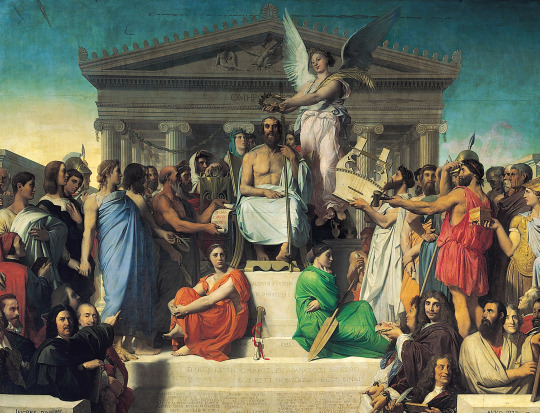
#paintings#greek mythology#zeus#thetis#oedipus#sphinx#ingres#homer#ossian#orlando furioso#jean-auguste dominique ingres#french painting#19th century painting#the art of the myth#fantasy sights
5 notes
·
View notes
Photo

THE DESCRIPTION OF SAINT BERNARD OF CLAIRVAUX
Feast Day: August 20
"God will either give us what we ask, or what He knows to be better for us."
The abbot of Clairvaux, confessor, the Last of the Fathers, the Doctor Mellifluus, and a Doctor of the Church, was born of a noble family at Fontaine-lès-Dijon, Burgundy, Kingdom of France in 1090. Bernard was the third of seven children, and his parents were Tescelin de Fontaine, lord of Fontaine-lès-Dijon, and Alèthe de Montbard, both members of the highest nobility of Burgundy. At the age of 9, he was sent to a school at Châtillon-sur-Seine run by the secular canons of Saint-Vorles, and had an interest in literature and rhetoric. He had a special devotion to the Virgin Mary, and he later wrote several works about the Queen of Heaven. At 19, he lost his mother, and during his youth, he did not escape trying temptations and around this time he thought of living a life of solitude and prayer. At the age of 22, while he was at prayer in a church, he felt the calling of God to enter the Cistercian Monks of Cîteaux.
His testimony was so irresistible that 30 of his friends, brothers and relative followed him into monastic life. Three years later, Bernard was sent with 12 monks to found a new monastery at Clairvaux, a forested place in the Valley of Wormwood. The reputation of his holiness soon attracted 130 new monks, including his own father. During the absence of the Bishop of Langres, Bernard was blessed as abbot by William of Champeaux, Bishop of Châlons-sur-Marne. From then on a strong friendship grew between the abbot and the bishop, who was professor of theology at Notre Dame of Paris and the founder of St. Victor Abbey in Paris.
One day in order to cool down his lustful temptation, he threw himself into ice-cold water. Another time, while sleeping in an inn, a prostitute was introduced naked beside him, and he saved his chastity by running. Many miracles were attributed to his intercession. One time, he restored the power of speech to an old man that he might confess his sins before he died. Another time, an immense number of flies, that infested the Church of Foigny, died instantly after the excommunication he made on them. So great was his reputation that Princes and Popes sought his advice, and even the enemies of the Church admired his holiness of his life and the greatness of his writings. Bernard then passed into Germany, and the reported miracles which multiplied almost at his every step undoubtedly contributed to the success of his mission. Conrad III of Germany and his nephew, the future Holy Roman Emperor, Frederick Barbarossa, received the cross from the hand of Bernard.
In 1128, Bernard participated in the Council of Troyes, which had been convoked by Pope Honorius II, and was presided over by Cardinal Matthew of Albano. The purpose of this council was to settle certain disputes of the bishops of Paris, and regulate other matters of the Church of France. The bishops made Bernard secretary of the council, and charged him with drawing up the synodal statutes. After the council, the bishop of Verdun was deposed. It was at this council that Bernard composed a rule for the Knights Templar; it soon became an ideal of Christian nobility. Around this time, he praised them in his 'Liber ad milites templi de laude novae militiae (Book to the Knights of the Temple, in praise of the new knighthood)'.
In 1144, Bernard was commissioned by Pope Eugene III to preach the Second Crusade. Moved by his burning words, many Christians embarked for the Holy Land, but the Crusade ended in total miserable failure. That proved that even saints sometimes can commit mistakes. He died on August 20, 1153 at the age of 62 or 63, in Clairvaux Abbey in the province of Champagne (modern day part of Ville-sous-la-Ferté).
Canonized a saint by Pope Alexander III on January 18, 1174 and declared a Doctor of the Church by Pope Pius VIII in 1830, his major shrine can be found at the famed Troyes Cathedral (Cathédrale Saint-Pierre-et-Saint-Paul), where his 12th century reliquary is held. Bernard is the patron saint of candlemakers, beekeepers, and the Poor Fellow-Soldiers of Christ and of the Temple of Solomon aka the Knights Templar.
11 notes
·
View notes
Text

Auguste La Fontaine. – fbawtft character profile
Full Name: Auguste de La Fontaine
Birthdate: April 14, 1893
Blood status: Half-Blood
Nationality: French
Patronus: Thestral
BACKGROUND
Born into a wizarding family, Auguste grew up surrounded by magic. He used to be a bright and curious kid who always had a question. His cheeky and playful nature was adored by everyone, however it did not last long. When he was nine years old, he witnessed his mother committing suicide. The woman kissed her son one last time and expressed how much burden she had to face and he could never understand her feelings. Auguste tought it had to do something with social pressure or ranks. But in reality, his mother was just simply mentally ill and she never got the help she needed. With the memories he had of his mother, he was determined to find answers. Is it possible to bring his mother back? Is there any magical cure for mental illnesses? The only 10 years old boy burried himself in books and started to read. During his school years in Beauxbatons he had only a few friends, mostly the outcasts. He did not mind it though! After his graduation from the wizarding school, he continued studying to become a healer. In his free time he travelled and collected books about ancient magic and dark arts. Little did he know that he was seeking for something that did not exist...
MAGICAL INFOS
Wizarding school: Beauxbatons Academy of Magic
Wand: Blackthorn wood, Salamander Scale core, 11" and Surprisingly swishy
Patronus: Thestral
Best subject: Alchemy
Worst subjects: Flying, Dancing
Boggart: His mother dying
Riddikulus: He wasn't able to cast the spell
Amortentia: Old books, freshly washed linen, melted caramel, his mother's perfume
PERSONALITY
Positive traits: Determined, passionate, enthusiastic, curious, witty in a humorous way
Negative traits: Impulsive, sarcastic, sometimes a show-off, emotionally closed off
RELATIONSHIPS EXPLAINED
Love interest:
• Leonidas Malinda (@potionboy3): After hearing about Leon's bookshop, Auguste decided to take a portkey and travel all the way from France, only to pay a visit at the store. He was desperately seeking rare books about ancient magic. At first he did not tell Leon what this whole thing was about, but eventually he opened up about his childhood as he became a regular customer. Their friendship (and later romance) was the missing piece in Auguste's life that made him admit that mental health and depression can't be cured through magic.
Friends:
• None yet.
SOME FACTS
– He's a descendant of the famous French fabulist, poet and wizard Jean de La Fontaine.
– His sexuality is homosexual.
– Faceclaim is Hale Appleman (The magicians)
8 notes
·
View notes
Photo

✧ August Patreon Exclusive Pattern ✧ Perretta's Trick
Hello my summer goths! For August, we're getting spicy.
🖤 My Patreon 🖤
The Devil Of Pope-Fig Island, a poem by Jean de La Fontaine
To sum it up, I think blogger Magdalena Łanuszka said it best (and hilariously)
"That particular story is about a reckless bet between a farmer and the devil: the challenge was to prove which of them could better dig furrows in the ground. Unfortunate farmer’s wife decided to help her husband and showed her lady parts to the devil, complaining that her husband had tried out his claws on her body and had scratched her between the legs. The devil apparently was not at all familiar with the women’s anatomy, as he thought that it was some kind of terrible wound; he got scared that his opponent is so mighty, gave up the challenge and run away."
This pattern is very different from my usual creations. Until this pattern, I have never used image conversions, I only worked from scratch. For this one, I converted the original illustration (1896) by Charles Eisen and then further edited it. For more behind the scenes information on how I created this, you'll have to read the Patreon post.
My Pattern:

The original illustration:

#cross stitch#crossstitch#gothcrossstitch#gothiccrossstitch#xstitch#xstitching#nightspiritstudio#night spirit studio
14 notes
·
View notes
Text
21 August, 18:13 ·
Il n'est pas bon d'être tellement aimé, si jeune, si tôt. Ca vous donne de mauvaises habitudes. On croit que c'est arrivée. On croit que ça existe ailleurs, que ça peut se retrouver. On compte la-dessus. On regarde, on espère, on attend. Avec l'Amour maternel, la vie vous fait à l'aube une promesse qu'elle ne tient jamais. On est ensuite obligé de manger froid jusqu'à la fin de ses jours. Après cela, chaque fois qu'une femme vous prend dans ses bras et vous serre sur son coeur, ce ne sont plus que des condoléances. On revient toujours gueuler sur la tombe de sa mère comme un chien abandonné. Jamais plus. Jamais plus. Jamais plus. Des bras adorables se referment autour de votre cou et des lèvres très douces vous parlent d'Amour, mais vous êtes au courant. Vous êtes passés à la source très tôt et vous avez tout bu. Lorsque la soif vous reprend, vous avez beau vous jeter de tous les côtés, il n'y a plus de puits, il n'y a que des mirages. Vous avez fait, dès la première lueur de l'aube, une étude très serrée de l'Amour et vous avez sur vous de la documentation. Partout où vous allez, vous portez en vous le poison des comparaisons et vous passez votre temps à attendre ce que vous avez déjà reçu. Je ne dis pas qu'il faille empêcher les mères d'aimer leurs petits. Je dis simplement qu'il vaut mieux que les mères aient encore quelqu'un d'autre à aimer. Si ma mère avait eu un amant, je n'aurais pas passé ma vie à mourir de soif auprès de chaque fontaine.
La Promesse de l'Aube de Romain Gary

4 notes
·
View notes
Text
Xtra Thoughts
August 18
The only real voyage of discovery consists not in seeking new landscapes but in having new eyes.
–Marcel Proust
“The first recipe for happiness is: Avoid too lengthy meditations on the past.”
–André Maurois
“Act so as to elicit the best in others and thereby in thyself.”
–Felix Adler
“The key to everything is patience. You get the chicken by hatching the egg – not by smashing it.”
–Arnold Glasow
“Patience and perseverance at length / Accomplish more than anger or brute strength.”
–Jean de La Fontaine
Hold your head high, stick your chest out. You can make it. It gets dark sometimes but morning comes… Keep hope alive.
–Jesse Jackson

6 notes
·
View notes
Text
The Fall of Fouquet
Of those who sat in Louis XIV's council in March 1661, Nicolas Fouquet was beyond a shadow of a doubt the most charismatic and flamboyant. His background was typical of the upwardly mobile noblesse de robe, and his family like so many others had invested a fortune accumulated as drapers merchants in ennobling office. Fouquet’s grandfather and his father, François, had both served as judges in the Parlement of Paris, and his mother, Marie de Maupeou, was herself a member of another rising robe clan. The family had acquired an impressive reputation for piety, and its links to Saint Vincent de Paul, the parti dévot, and the Compagnie du Saint-Sacrement had opened additional doors to the powerful. All six of Marie’s surviving daughters entered the religious life, as would three of her five sons. Nicolas, on the other hand, was destined for a career in royal service, joining first the Parlement of Metz, and then, following the route trekked by countless aspiring young robins, by purchasing the office of maître des requêtes and serving as an intendant, attracting the attention of Mazarin in the process. In 1650, he had bought the prestigious office of procureur général in the Parlement of Paris, and having proved himself scrupulously loyal to Mazarin he was rewarded with the post of surintendant des finances in 1653.
As surintendant he was responsible for government fiscal policy in the aftermath of the Fronde and was charged with finding the funds needed to prosecute the seemingly endless war with Spain, proving remarkably able and helping to secure a French victory consummated in the Peace of the Pyrenees of November 1659. Anyone capable of surviving for long in the cut-throat world of seventeenth-century finance was, almost by definition, talented, and no less certain to become fabulously rich. Fouquet was no exception, and by 1661 he had added prodigious wealth to an already substantial family fortune that was made manifest in the construction of the beautiful château of Vaux-le-Vicomte, only a few miles from the royal palace of Fontainebleau. Designed by the architect Louis Le Vau and with its interiors decorated by Charles Le Brun, Vaux-le-Vicomte was an aesthetic triumph set within majestic gardens, created by André Le Nôtre, complete with ornamental fountains that have rightly been seen as an inspiration for Versailles. A man of taste and refinement, Fouquet forged a reputation as a generous artistic patron, and, amongst others, Molière, Pierre Corneille, Jean de La Fontaine, and Paul Pellisson benefitted from the surintendant’s largesse. Despite his family’s impeccable dévot credentials, Nicolas moved in eclectic and heterodox intellectual circles, and, much to his mother’s chagrin, his reputed good looks and genuine charm had given him an established reputation as a gallant.

(Fouquet on the left, Louis XIV on the right)
Rich, self-confident, and having proved himself to be an able and loyal servant of the crown, Fouquet, at only forty-six years of age, had every reason to suppose that a long and profitable career stretched before him. His actions in the months following the cardinal’s death were certainly not those of a man harbouring any inner self-doubts. In August 1661, he agreed to sell his office of procureur général in the Parlement to his friend Achille de Harlay, presumably confident that his interests in the court would be well served as he also had close ties with its first president, Guillaume de Lamoignon. More dramatically, on 17 August 1661, Fouquet threw one of the most notorious parties in French history. Using the magnificence of Vaux-le-Vicomte as the setting, the guests, who included large swathes of the French governing elite, were treated to a sumptuous fête, with a theatrical performance directed by Molière, fireworks, and other entertainments all ostensibly in honour of the king. Popular tradition, reinforced by numerous literary and cinematic productions, maintains that Louis XIV, furious at being upstaged by a mere minister and convinced that such lavish display could only be at his own expense, swore revenge. Fouquet had undoubtedly been tactless as the interior of the château boasted a lavish state bedroom, complete with railed bed, which had been prepared as if the monarch was intending to be a regular guest of his munificent minister. Those aristocrats present were horrified that a mere robin should be so presumptuous and the king almost certainly shared their prejudices. If this was the case, he was nevertheless careful to conceal his fury and neither Fouquet nor contemporary witnesses interpreted events in quite the dramatic fashion of later commentators, and the minister continued to work almost daily with the king.
At the end of August, the monarch and his entourage began a tour of Brittany, timed to coincide with the assembly of the provincial estates. By now, the surintendant had received a number of quite explicit warnings about threats to his position and he was growing anxious. Despite his misgivings, he travelled to Nantes and while he was suffering from a fever the king had sent for news of his health, which must have helped to allay his fears. If Louis-Henri de Loménie de Brienne, who was present on the scene, is to be believed, Fouquet even had hopes that it would be Colbert who would be arrested and that his position was secure. On 5 September, the surintendant was well enough to work as normal with the king, but as he left the audience he was accosted by Charles d’Artagnan and a detachment of musketeers. D’Artagnan promptly arrested an astonished Fouquet, who is said to have exclaimed that ‘he thought that he held a higher place in the king’s esteem than anyone else in the kingdom’. If that was indeed the case, then it was a monumental misjudgement because he had just plunged into the most profound disgrace.

D'Artagnan (left) arrests Fouquet (right)
Almost immediately it became apparent that the fall of Fouquet was no momentary loss of favour. Instead it had been carefully premeditated over several months by Louis XIV and Jean-Baptiste Colbert, another aspiring robe noble who had made his fortune as the steward of Mazarin’s private fortune. Colbert not only replaced Fouquet at the head of government finances, but he also directed a trial that was intended to conclude in a death sentence against his imprisoned rival. Fouquet’s brothers, his wife, mother, and close associates were either arrested or exiled, his papers seized in circumstances that made a travesty of the law, and he was brought before a specially convoked commission, not the Parlement of Paris as would have been his right had he not sold his office to Achille de Harlay only a few weeks before. Fouquet had seriously undermined his own political position, and recent precedents were grim. Had Richelieu been directing affairs, Fouquet would have been fortunate indeed to escape the block. However, Colbert seems to have been determined to use Fouquet as a scapegoat for the endemic corruption that both men had profited from, and which had been one of the defining features of Mazarin’s ministry. Fouquet was therefore accused of péculat, an elastic term encompassing a wide range of financial misdemeanours. While burrowing around in Fouquet’s château of Saint-Mandé, the investigators also stumbled across some secret documents from 1658 outlining a strategy for revolt in the event of his arrest. Although it was clear that they were intended for use against Mazarin, not the king, it was decided to add the capital charge of lese-majesty to the existing accusations against the prisoner.
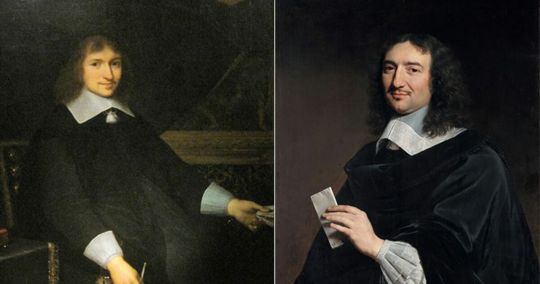
(Fouquet vs Colbert, there will be only one)
Raking up all manner of supposed earlier misdeeds against a disgracié was common practice. On this occasion it proved counterproductive, and had the government moved quickly it could conceivably have obtained a rapid judgement and the desired death sentence. Instead, it tried to dig up more and more evidence and the trial proper did not commence until 3 March 1662. Confronted by a complicated mass of financial accusations and with Fouquet putting up a spirited and effective defence of his actions, the case dragged on for over two years. Colbert and the king grew increasingly frustrated, meddling with legal procedure, seeking to intimidate judges and witnesses alike and making it clear that while they wanted to give the impression of a fair trial it should not be at the expense of a guilty verdict. Fouquet’s family and his many friends and admirers gradually recovered from the shock of his arrest and began an energetic campaign on his behalf, convincing a substantial part of public opinion that he was the victim of a vendetta. When the verdict was finally announced in December 1664, the judges did find the accused guilty of péculat, but rather than impose the death penalty as the government intended they voted by a small majority in favour of banishment and a substantial fine.
[..]
Fouquet’s spectacular fall is arguably the most dramatic and poignant example of the potentially calamitous consequences of ministerial disgrace. The first great political crisis of Louis XIV’s personal rule, it cast a long shadow and yet in many ways it marked the end rather than the beginning of a chapter as the age of the minister-favourite gave way to that of the secretary of state. Although Fouquet had escaped with his life, his draconian punishment was very much in the tradition of Louis XIII and Richelieu and arguably of late medieval monarchy. Rather than simply dismiss Fouquet and banish him from court, as a master would discard an unsatisfactory servant, Louis XIV had treated him as a criminal who had stolen from his treasury and plotted against his authority. It was a very political trial, one that brings to mind the treatment of Claude Barbin, following the murder of Concini, or that of the maréchal de Marillac, in the aftermath of the Day of Dupes. Indeed, Fouquet’s miserable existence in Pignerol almost bears comparison with that of cardinal Jean Balue, who according to popular legend was locked in an iron cage in the château of Loches after falling foul of Louis XI. The harsh treatment of Fouquet’s family and the confiscation of their property as well as the persecution of his friends and clients was again consistent with earlier practice, echoing in milder form the attacks on the Concini in 1617.
Julian Swann- Exile, Inprisonment or Death- The Politics of Disgrace in Bourbon France.

#xvii#julian swann#exile imprisonment or death: the politics of disgrace in bourbon france#louis xiv#nicolas fouquet#cardinal mazarin#la paix des pyrénées#louis le vau#charles le brun#jean baptiste poquelin#molière#jean de la fontaine#pierre corneille#paul pellisson#guillaume de lamoignon#achille de harlay#château de vaux le vicomte#jean baptiste colbert#d'artagnan#cardinal de richelieu#louis xiii#concino concini#claude barbin#maréchal de marillac
4 notes
·
View notes